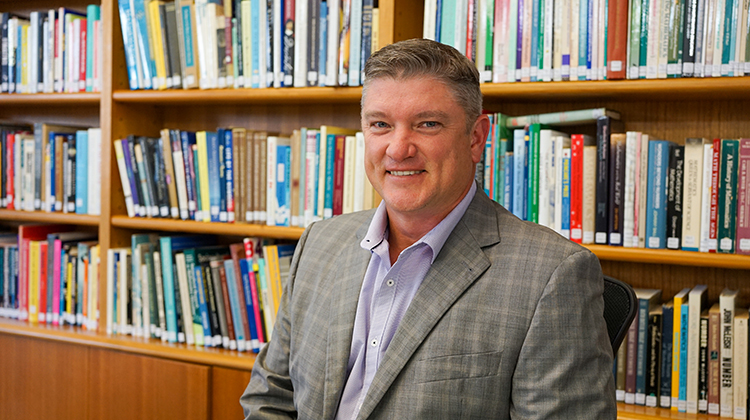Inspiration from maths to help students return to the classroom

Home schooling during the pandemic might have left many parents and carers feeling drained of ideas, but as the 2022 school year resumes back in the classroom, one leading educator is urging families to regain their passion for learning.
“Back to school is only a week away, so it’s a great time to ease your child’s return to the classroom by being enthused and motivated about learning,” says one of Australia’s leading mathematics authors James Burnett.
“There are many ways to engage your children while you’re still at home, well before they head back to school for 2022,” said Burnett, who was recently named Queensland University of Technology’s 2021 Outstanding Alumnus in the Education Category.
“Keeping your child interested in learning will help ease the challenges that may arise.”
The co-founder and executive chairperson of ORIGO Education, Burnett says by giving children a greater understanding of mathematics, students are prepared for a world where they have the skills and confidence to contribute to society as problem solvers, thinkers, and innovators.
When it comes to learning mathematics, there are many practical ways parents and carers can support their children.
“While helping your child develop their skills, look for ways to work with visual materials that they can touch and move, such as blocks or household items; or even two-dimensional illustrations or images found online or in books,” Burnett said.
“Some children face difficulties when it comes to learning mathematics so visual learning better engages students as it allows them to conceptualise what is being taught. Visual representations give connections to what students already know, and in doing so, help them to more easily understand new ideas.
"Representations serve to give students the bigger picture and, therefore, a deeper understanding of the mathematical idea.”
He said one of the most significant ways that children and adults can learn new ideas is by collaborating and communicating.
“Spark open conversations with your child about mathematical ideas and ask them to talk you through their thinking process if they are generating answers.
“This will allow your child to reason and reflect on their strategy which in turn will create a more purposeful learning experience.
"In today's classrooms, it is generally considered good practice to give students time to reflect on the lesson's learning either as a whole class or by personal journal entries."
Burnett encourages families to show children the importance of maths and allow them to apply their skills to 'real life’ scenarios.
"A conceptual approach requires students to use their newly-acquired understanding to think and to reason mathematically and to apply these understandings to problem-solving situations that are rich and meaningful to them," he said.
“Presenting opportunities can be as simple as asking your older child to figure out the discounted price while grocery shopping or talking about fractional measures as you cook or bake together.”